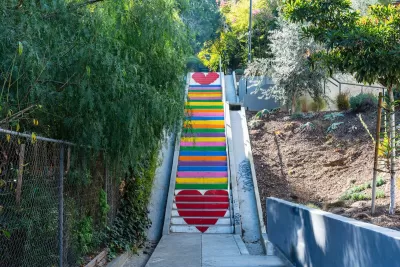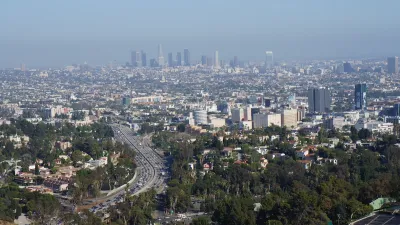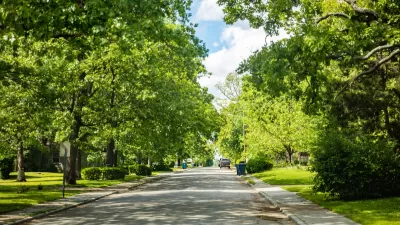The Los Angeles Urban Forest Equity Collective has developed an equity-centered tree-planting framework and toolkit to address historic underinvestment and mitigate extreme heat in vulnerable neighborhoods.

Trees play a critical role in mitigating extreme heat, a growing and deadly impact of climate change. Research suggests that increasing tree canopy in the most heat-vulnerable neighborhoods could save up to half of the lives lost to heat-related incidents. However, tree planting in Los Angeles faces challenges such as its extensive roadways, semi-arid climate, and socioeconomic disparities.
In response, UCLA researcher Edith de Guzman co-founded the Los Angeles Urban Forest Equity Collective, bringing together forestry experts, city officials, community organizations, and researchers to address the legacy of underinvestment in certain neighborhoods. The Collective recently published a decision-making framework and toolkit to advance urban forest equity and improve health outcomes through inclusive, practical solutions.
As reported by Mara Elana Burstein, the framework emphasizes equity-centered tree planting, featuring public engagement strategies co-developed with community organizations to ensure resident voices are prioritized. By rethinking traditional approaches, the Collective developed innovative strategies to "green" historically underserved neighborhoods that have lacked the resources to enjoy the environmental benefits seen in wealthier areas. Their work has produced actionable steps for municipal leaders, local organizations, and community members to overcome barriers to equitable tree planting.
As part of their efforts, the Collective introduced hyperlocal implementation strategies for Central Alameda and Sylmar, two Los Angeles neighborhoods with distinct challenges. By collaborating with residents and city officials, the team identified cooling solutions tailored to each area, from dense public housing in Central Alameda to the sprawling single-family homes of Sylmar. These examples showcase how the tools and framework can drive equitable urban greening and create healthier, more resilient communities.
FULL STORY: LCI co-develops decision-making framework and toolkit that centers equity in tree planting

Study: Maui’s Plan to Convert Vacation Rentals to Long-Term Housing Could Cause Nearly $1 Billion Economic Loss
The plan would reduce visitor accommodation by 25,% resulting in 1,900 jobs lost.

North Texas Transit Leaders Tout Benefits of TOD for Growing Region
At a summit focused on transit-oriented development, policymakers discussed how North Texas’ expanded light rail system can serve as a tool for economic growth.

Why Should We Subsidize Public Transportation?
Many public transit agencies face financial stress due to rising costs, declining fare revenue, and declining subsidies. Transit advocates must provide a strong business case for increasing public transit funding.

How to Make US Trains Faster
Changes to boarding platforms and a switch to electric trains could improve U.S. passenger rail service without the added cost of high-speed rail.

Columbia’s Revitalized ‘Loop’ Is a Hub for Local Entrepreneurs
A focus on small businesses is helping a commercial corridor in Columbia, Missouri thrive.

Invasive Insect Threatens Minnesota’s Ash Forests
The Emerald Ash Borer is a rapidly spreading invasive pest threatening Minnesota’s ash trees, and homeowners are encouraged to plant diverse replacement species, avoid moving ash firewood, and monitor for signs of infestation.
Urban Design for Planners 1: Software Tools
This six-course series explores essential urban design concepts using open source software and equips planners with the tools they need to participate fully in the urban design process.
Planning for Universal Design
Learn the tools for implementing Universal Design in planning regulations.
Ascent Environmental
Borough of Carlisle
Institute for Housing and Urban Development Studies (IHS)
City of Grandview
Harvard GSD Executive Education
Toledo-Lucas County Plan Commissions
Salt Lake City
NYU Wagner Graduate School of Public Service





























